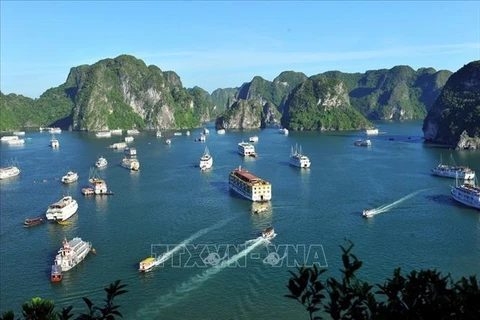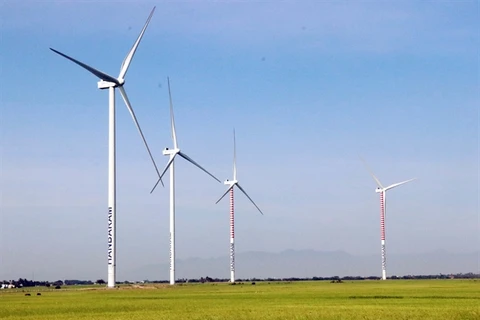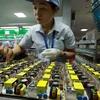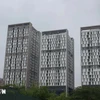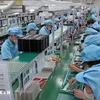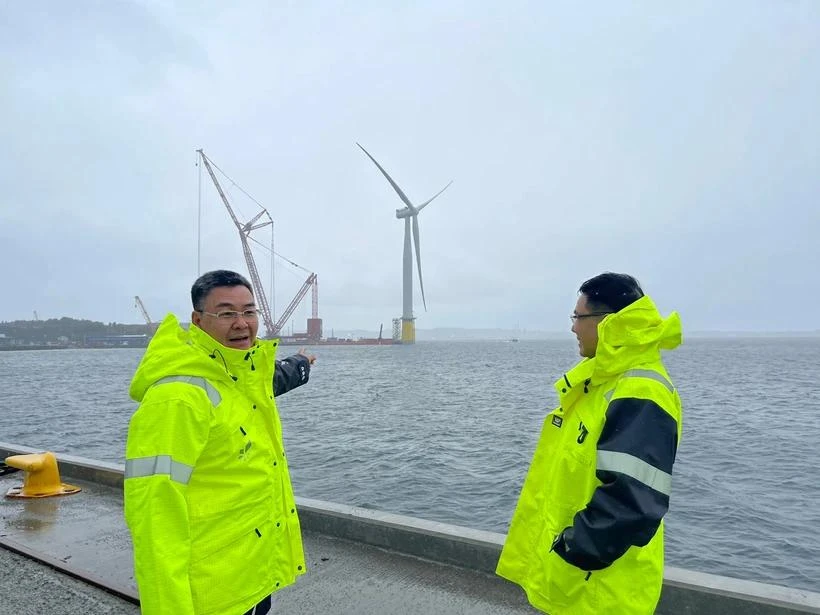
Hanoi (VNA) - Conclusion 76-KL/TW has paved the way for the Vietnam Oil and Gas Group (Petrovietnam) to build strategies for offshore wind power development, contributing to promoting clean energy in Vietnam.
The goals of reducing emissions and developing a green economy pose urgent requirements for the operations of the oil and gas industry in general, and Petrovietnam in particular.
Irreversible trend
In response to combating climate change and the commitment to achieving net-zero emissions, the world is witnessing a strong shift toward renewable energy development to gradually replace fossil fuels. Oil and gas corporations have been investing tens of billions of USD in renewable energy development programmes, while gradually reducing their investments in fossil fuel projects.
Offshore wind power has emerged as one of the most promising sectors with significant development potential. Global leading offshore wind power investors, including Equinor, Shell, Repsol, Total, BP, Chevron, and CNOC, among others, have gradually transitioned to renewable energy projects.
Among them, companies like Orsted of Denmark have fully transitioned to renewable energy projects. Orsted has already installed around 9,000 MW of offshore wind power and is set to reach 50,000 MW of installed capacity by 2030. Equinor of Norway is also gradually reducing its share in oil and gas while increasing its focus on renewable energy.
Vietnam, with its high level of economic openness and global integration, has set goals to advance its offshore wind power industry. According to the Power Development Plan VIII approved by the Prime Minister in May 2023, the country’s offshore wind power capacity is expected to reach about 6,000MW by 2030 and could increase further if technology develops quickly and electricity prices and transmission costs are reasonable. By 2050, the capacity is projected to reach 70,000-91,500MW.

Setting ambitious goals for developing the offshore wind power industry brings significant benefits to Vietnam. Developing offshore wind power contributes to ensuring national energy security, reducing demand on fossil fuel imports, creating new jobs, fostering marine economic development, and developing energy infrastructure. Most importantly, it contributes to reducing greenhouse gas emissions in Vietnam’s energy sector.
Solid foundations, steady steps
Multinational oil and gas corporations play a crucial role in developing large-scale offshore wind power projects. According to the International Energy Agency (IEA), the oil and gas industry, with its experience in implementing offshore projects, will contribute to sharing supply chains and technology. The involvement of oil and gas companies is key to rapidly establishing offshore wind power as a major industry.
According to Dr. Nguyen Quoc Thap, Chairman of the Vietnam Oil and Gas Association, the experience in exploration and offshore construction, human resources, and knowledge of geology and marine chemistry provide favourable conditions for oil and gas companies to enter the offshore renewable energy industry. This involvement also helps optimise investment, avoid waste of national resources, and reduce production costs
Dr. Ngo Duc Lam, an energy expert and former Deputy Director of the Ministry of Industry and Trade’s Institute of Energy, said in Vietnam, companies capable of participating in offshore wind power projects must be large-sized with extensive experience and strong financial capabilities. Petrovietnam and the Vietnam Electricity Group (EVN) are capable of piloting offshore wind power development projects.

Currently, Petrovietnam is one of the leading State-owned economic groups, playing a key role in the national economy, contributing to ensuring energy security, economic security, and safeguarding national security and sovereignty at sea.
Petrovietnam and its member units are considered to have significant advantages in implementing offshore projects for various reasons, such as data collection, international relations, offshore manpower, manufacturing, and operations.
One of Petrovietnam's strengths in energy transition, particularly in offshore wind power, is that it is the only company in Vietnam with national seabed geological data collected and stored during the process of surveying, exploring, and drilling for oil and gas.
With its pioneering mission in the energy sector, since 2019, Petrovietnam and its member units have focused on evaluating and researching energy transition issues to adapt to trends and maximise strengths, including shifting towards green and clean energy by increasing the portition of gas, producing hydrogen, and developing offshore wind power.
Recently, Petrovietnam units such as Vietsovpetro and PTSC signed memoranda of understanding, confidentiality agreements, bilateral cooperation agreements, and survey/service contracts with offshore wind power investors worldwide./.

